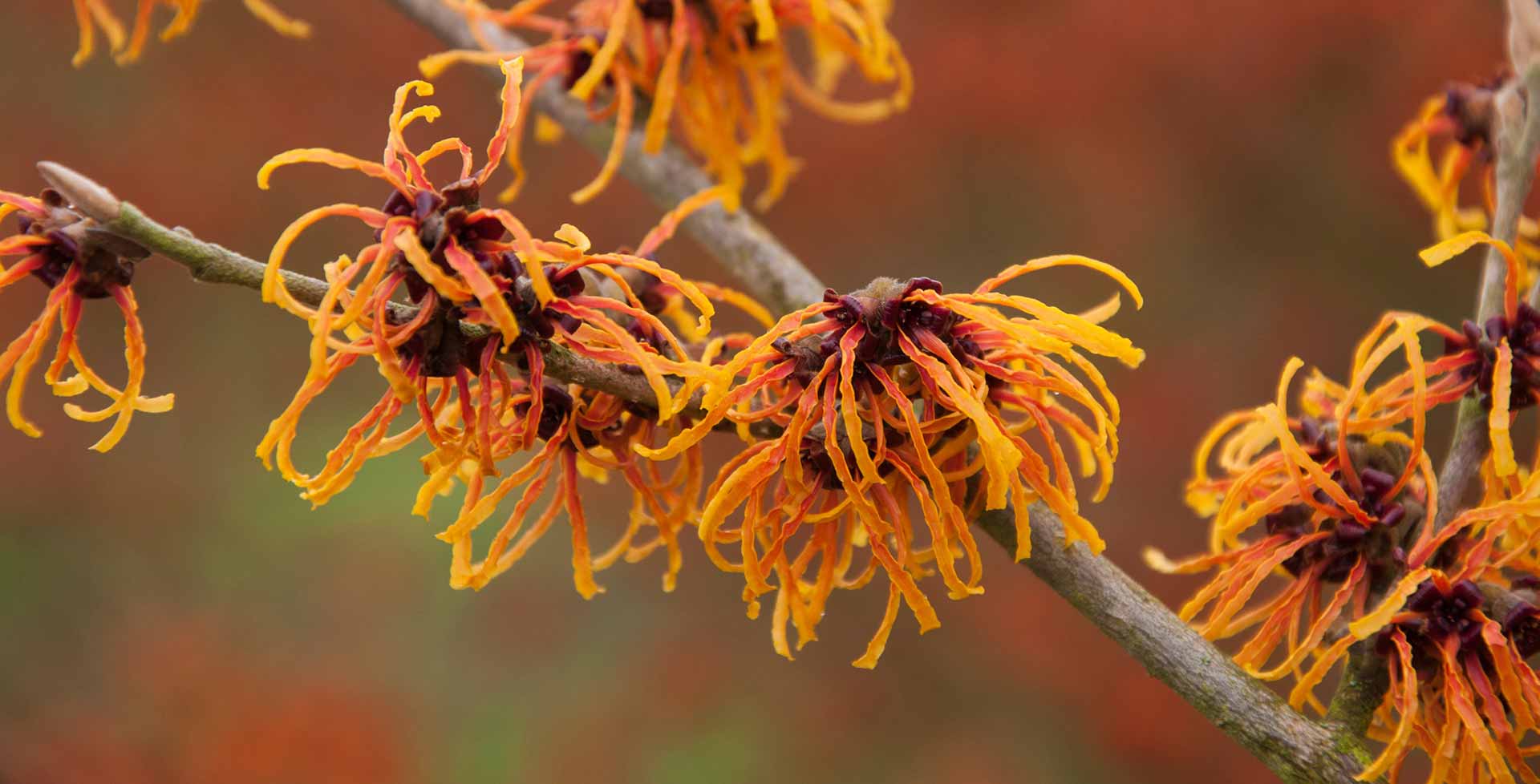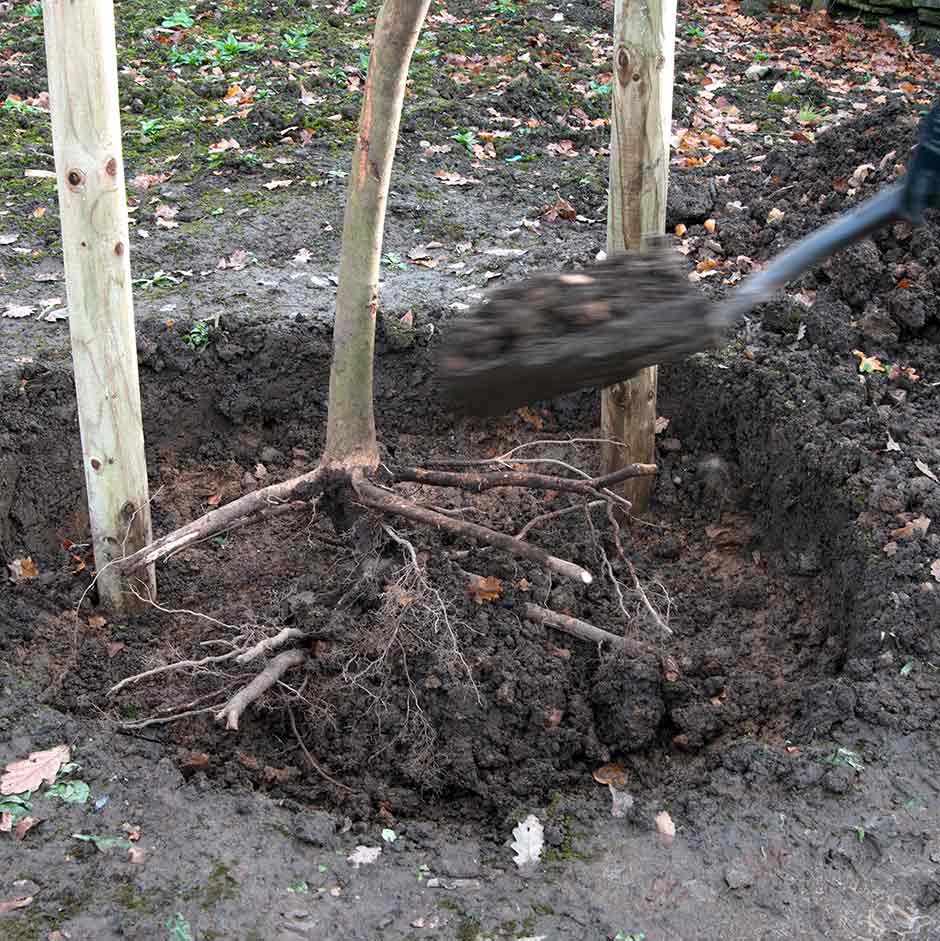
Introducing...
Witch hazel
Botanical name: Hamamelis
Commonly known as witch hazel, with its spicy fragrant, spidery flowers in shades of yellow, orange and red, Hamamelis brings colour and scent to your garden in winter. Although slow growing, they can eventually become large spreading shrubs or small trees. They look good as specimen plants, particularly under-planted with early bulbs such as snowdrops, winter aconites and crocuses.
Looks
These spreading deciduous shrubs, ranging from 2.5-5m (8-16ft) in height and spread, produce spider-like, usually yellow (but also orange or red) flowers on the bare branches in late winter. The oval leaves give good autumn colour, turning bright yellow and orange before falling.
Likes
Witch hazels like well-drained, neutral to acid soil in sun or light shade.
Dislikes
They will not grow in alkaline (chalky) soils or flower in deep shade. They dislike exposure to cold winter winds, which can damage the flower buds.
Did you know?
Witch hazel has long been used in traditional medicine to treat anything from damaged skin and bruises to insect bites. The freshly cut stems from the plant were also used for water divining.
Growing guide

How to grow witch hazel
All the information you’ll need to grow and care for witch hazel in your garden.
Witch hazels we recommend
Hamamelis × intermedia 'Pallida'
witch hazel 'Pallida'
- 2.5–4 metres
- 2.5–4 metres
Hamamelis × intermedia 'Diane'
witch hazel 'Diane'
- 2.5–4 metres
- 2.5–4 metres
Hamamelis × intermedia 'Arnold Promise'
witch hazel 'Arnold Promise'
- 2.5–4 metres
- 2.5–4 metres
Hamamelis × intermedia 'Pallida'
witch hazel 'Pallida'
- 2.5–4 metres
- 2.5–4 metres
Hamamelis × intermedia 'Diane'
witch hazel 'Diane'
- 2.5–4 metres
- 2.5–4 metres
Hamamelis × intermedia 'Arnold Promise'
witch hazel 'Arnold Promise'
- 2.5–4 metres
- 2.5–4 metres
Useful advice

Trees and shrubs: removing suckers and seedlings

Trees and shrubs: planting

Buying: trees and shrubs
Phytophthora root rot
Get involved
The Royal Horticultural Society is the UK’s leading gardening charity. We aim to enrich everyone’s life through plants, and make the UK a greener and more beautiful place.